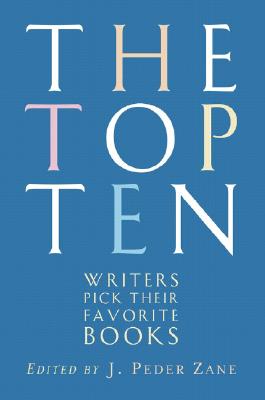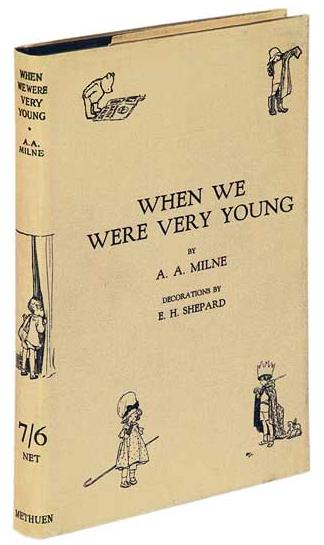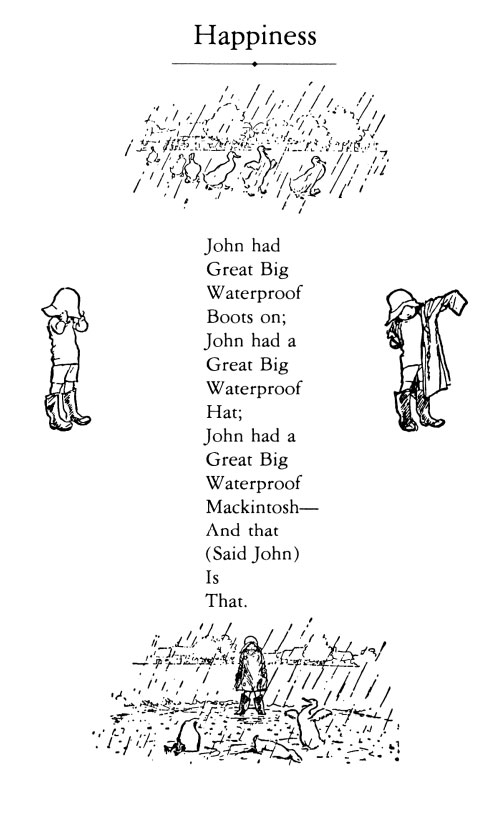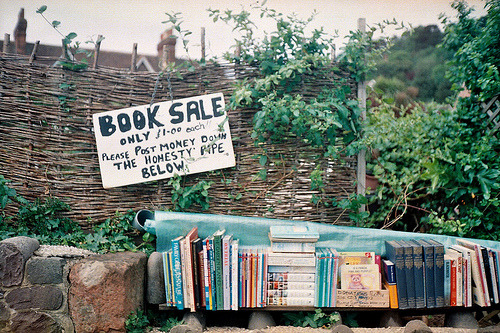Tracking innovation, development and experimentation in information studies and library science and spotting new technologies, trends, fun stuff and much more.
Monday, January 30, 2012
The Greatest Books of All Time, As Voted by 125 Famous Authors
 The Top Ten: Writers Pick Their Favorite Books asks 125 of modernity’s greatest British and American writers — including Norman Mailer, Ann Pratchett, Jonathan Franzen, Claire Messud, and Joyce Carol Oates — “to provide a list, ranked, in order, of what [they] consider the ten greatest works of fiction of all time– novels, story collections, plays, or poems.”
The Top Ten: Writers Pick Their Favorite Books asks 125 of modernity’s greatest British and American writers — including Norman Mailer, Ann Pratchett, Jonathan Franzen, Claire Messud, and Joyce Carol Oates — “to provide a list, ranked, in order, of what [they] consider the ten greatest works of fiction of all time– novels, story collections, plays, or poems.”
Of the 544 separate titles selected, each is assigned a reverse-order point value based on the number position at which it appears on any list — so, a book that tops a list at number one receives 10 points, and a book that graces the bottom, at number ten, receives 1 point.
In introducing the lists, David Orr offers a litmus test for greatness:
If you’re putting together a list of ‘the greatest books,’ you’ll want to do two things: (1) out of kindness, avoid anyone working on a novel; and (2) decide what the word ‘great’ means. The first part is easy, but how about the second? A short list of possible definitions of ‘greatness’ might look like this:
1. ‘Great’ means ‘books that have been greatest for me.’
2. ‘Great’ means ‘books that would be considered great by the most people over time.’
3. ‘Great’ has nothing to do with you or me — or people at all. It involves transcendental concepts like God or the Sublime.
4. ‘Great’? I like Tom Clancy.
From David Foster Wallace (#1: The Screwtape Letters by C.S. Lewis) to Stephen King (#1: The Golden Argosy, a 1955 anthology of the best short stories in the English language), the collection offers a rare glimpse of the building blocks of great creators’ combinatorial creativity — because, as Austin Kleon put it, “you are a mashup of what you let into your life.”

The book concludes with an appendix of “literary number games” summing up some patterns and constructing several overall rankings based on the totality of the different authors’ picks. Among them (*with links to free public domain works where available):
TOP TEN WORKS OF THE 20TH CENTURY
- Lolita by Vladimir Nabokov
- The Great Gatsby by F. Scott Fitzgerald
- The Search of Lost Time by Marcel Proust
- Ulysses* by James Joyce
- Dubliners* by James Joyce
- One Hundred Years of Solitude by Gabriel Garcia Marquez
- The Sound and the Fury by William Faulkner
- To The Lighthouse by Virginia Woolf
- The complete stories of Flannery O’Connor
- Pale Fire by Vladimir Nabokov
TOP TEN WORKS OF THE 19th CENTURY
- Anna Karenina* by Leo Tolstoy
- Madame Bovary* by Gustave Flaubert
- War and Peace by Leo Tolstoy
- The Adventures of Huckleberry Finn by Mark Twain
- The stories of Anton Chekhov
- Middlemarch* by George Eliot
- Moby-Dick by Herman Melville
- Great Expectations* by Charles Dickens
- Crime and Punishment by Fyodor Dostoevsky
- Emma* by Jane Austen
TOP TEN AUTHORS BY NUMBER OF BOOKS SELECTED
- William Shakespeare — 11
- William Faulkner — 6
- Henry James — 6
- Jane Austen — 5
- Charles Dickens — 5
- Fyodor Dostoevsky — 5
- Ernest Hemingway — 5
- Franz Kafka — 5
- (tie) James Joyce, Thomas Mann, Vladimir Nabokov, Mark Twain, Virginia Woolf — 4
TOP TEN AUTHORS BY POINTS EARNED
- Leo Tolstoy — 327
- William Shakespeare — 293
- James Joyce — 194
- Vladimir Nabokov — 190
- Fyodor Dostoevsky — 177
- William Faulkner — 173
- Charles Dickens — 168
- Anton Checkhov — 165
- Gustave Flaubert — 163
- Jane Austen — 161
As a nonfiction loyalist, I’d love a similar anthology of nonfiction favorites — then again, famous writers might wave a knowing finger and point me to the complex relationship between truth and fiction.
(Via Brain Pickings.)
Friday, January 27, 2012
Assembling a yurt (video)
Putting up a yurt (also called a ger) is fast and easy, but its best done by an entire family. This yurt was moved by the family of Shagdarsuren Herelchuluun, on the east side of Lake Hovsgol, in northern Mongolia, not far from the Russian border.
Found at Boing Boing.
On fixing academic publishing
Nancy Sims, of the University of Minnesota Libraries, responds to The Atlantic's criticisms of JSTOR, an academic database that can be difficult and expensive to access: "There are things JSTOR does that I do have issues with. I wish it was doing more to provide more open access to the public domain materials it holds, for example. The JSTOR independent researcher program has all kinds of problems. But JSTOR is, for the most part, a pretty good element of the existing landscape."
(Via Boing Boing.)
The Universe Bound: Astronomical by Mishka Henner
We are all well aware that the reading of books can open up new worlds but who knew you could fit the entire universe in a set of 12 books.
Mishka Henner does just that with Astronomical; twelve hefty volumes representing a scale model of our solar system from the Sun to Pluto with the width of each page representing one million kilometers!
The Sun pops up in Volume 1 and Pluto closes out the set on the last page of Volume 12 and there is a plethora of darkness in between and just like that the entire universe is contained between the covers.
Details:
The first 10 sets retail for £100 and each is printed-on-demand. Each volume is 5.5″ x 8.5″, perfect bound with white interior paper (50# weight), black and white interior ink, and white exterior paper (100# weight).
Here's a video preview:
ASTRONOMICAL - The Movie from Mishka Henner on Vimeo.
Thursday, January 26, 2012
Searching for Context: Modeling the Information-Seeking Process of College Students in the Digital Age
What is it like to be a college student in the digital age? Alison Head — lead researcher for the national study, Project Information Literacy, Berkman Fellow, and Research Scientist in University of Washington’s Information School — presents a working typology of the undergraduate information-seeking process, including students’ reliance on and use of Web sources.
More info on this event here (includes video clip)
Harvard University. Berkman Center for Internet & Society Podcast
(Via Celia's.)
Fritz Goro's Photos: The Art of Science (photostream)
Stephen Jay Gould once said that LIFE photographer Fritz Goro, who died in 1986, was "the most influential photographer that science journalism (and science in general) has ever known." LIFE.com has posted a gallery of his truly wonderful photos.
In the photo above Edwin Land, the president and co-founder of the Polaroid Corporation, demonstrates his company's "60-second film" in 1963. By allowing photographers to see (almost) immediately what they had shot, Polaroid revolutionized photography and foreshadowed the advent of digital photography and its emphasis on instant gratification.
Wednesday, January 25, 2012
Neil deGrasse Tyson Lists 8 (Free) Books Every Intelligent Person Should Read
1.) The Bible (eBook) - “to learn that it’s easier to be told by others what to think and believe than it is to think for yourself.”
2.) The System of the World by Isaac Newton (eBook) – “to learn that the universe is a knowable place.”
3.) On the Origin of Species by Charles Darwin (eBook – Audio Book) - “to learn of our kinship with all other life on Earth.”
4.) Gulliver’s Travels by Jonathan Swift (eBook – Audio Book) – “to learn, among other satirical lessons, that most of the time humans are Yahoos.”
5.) The Age of Reason by Thomas Paine (eBook – Audio Book) – “to learn how the power of rational thought is the primary source of freedom in the world.”
6.) The Wealth of Nations by Adam Smith (eBook – Audio Book) - “to learn that capitalism is an economy of greed, a force of nature unto itself.”
7.) The Art of War by Sun Tsu (eBook – Audio Book) - “to learn that the act of killing fellow humans can be raised to an art.”
8.) The Prince by Machiavelli (eBook – Audio Book) - “to learn that people not in power will do all they can to acquire it, and people in power will do all they can to keep it.”
Click this link for more commentary and links to free copies
Wednesday, January 18, 2012
Happy 130th Birthday, A. A. Milne: “Happiness” and the Origin of Winnie-the-Pooh
On rainy days and the simplicity of happiness.
 One hundred and thirty years ago today, Alex Alexander Milne (1882-1956) took his first breath. Best known for authoring the Winnie-the-Pooh book series, among the most beloved children’s books with timeless philosophy for grown-ups, A. A. Milne was also a prolific poet. In 1924, two years before the first Winnie-the-Pooh book, he penned When We Were Very Young — a collection of poetry for young children, illustrated by E. H. Shepard. In the 38th poem of the book, titled “Teddy Bear”, the famed Winnie-the-Pooh character makes his first appearance. Originally named “Mr. Edward Bear” by Christopher Robin Milne, Milne’s own son, Winnie-the-Pooh is depicted wearing a shirt that was later colored red for a recording produced by Stephen Slesinger, an image that eventually shaped the familiar Disney character.
One hundred and thirty years ago today, Alex Alexander Milne (1882-1956) took his first breath. Best known for authoring the Winnie-the-Pooh book series, among the most beloved children’s books with timeless philosophy for grown-ups, A. A. Milne was also a prolific poet. In 1924, two years before the first Winnie-the-Pooh book, he penned When We Were Very Young — a collection of poetry for young children, illustrated by E. H. Shepard. In the 38th poem of the book, titled “Teddy Bear”, the famed Winnie-the-Pooh character makes his first appearance. Originally named “Mr. Edward Bear” by Christopher Robin Milne, Milne’s own son, Winnie-the-Pooh is depicted wearing a shirt that was later colored red for a recording produced by Stephen Slesinger, an image that eventually shaped the familiar Disney character.
The third poem in the book is a short gem titled “Happiness” — a wonderful meditation on how little it takes to find happiness. (And, clearly, a giant missed opportunity for Apple.)
(Via Brain Pickings.)
Tuesday, January 17, 2012
Amazing images of Saturn via Cassini
NASA's Cassini spacecraft is now a nearly a year into its extended mission, called Cassini Equinox (after its initial 4-year mission ended in June, 2008). The spacecraft continues to operate in good health, returning amazing images of Saturn, its ring system and moons, and providing new information and science on a regular basis. The mission's name, "Equinox" comes from the upcoming Saturnian equinox in August, 2009, when its equator (and rings) will point directly toward the Sun. The Equinox mission runs through September of 2010, with the possibility of further extensions beyond that. Collected here are 24 more intriguing images from our ringed neighbor.
Found via TYWKIWDBI.
Friday, January 13, 2012
The Light of Day (video)
It’s not hard to grow old but making peace with the challenges of aging is no easy task. Photographer Simon Biswas glimpses the conflict in a series of emotional video portraits that tell his subjects’ stories with honesty and dignity. His sitters regale us with fond memories of collecting Brooklyn Dodgers autographs and tragic losses like the death of a child. The Light of Day celebrates the experience of growing old and pays respect to those who have preceded us in making sense of life’s many unanswered questions.
Thursday, January 12, 2012
Phone Stacking (cool idea)
We have all been there. You are out in a restaurant or club with friends. The conversation is going well. And then a cell phone rings, is answered and the conversation is halted. Well, someone over at Tumblr has come up with a novel idea - "Phone Stacking".
The rules are simple and begin after ordering: Each person at the table is required to place their phone facedown, (for dramatic effect you can stack the cellphone pile in the center of the table) at the beginning of the meal. While eating, incoming email and text notifications will sound, and the first person who picks up his/her phone also picks up the entire bill. If no one gives into temptation, every participant is declared a winner and pays for his/her own meal.
There are variations and more info at the link.
Found at PSFK
On Gratitude: A most inspiring video
"You think this is just another day in your life. It’s not just another day — it’s the one day that is given to you, today. It’s given to you, it’s a gift. It’s the only gift that you have right now, and the only appropriate response is gratefulness. If you do nothing else but to cultivate that response to the great gift that this unique day is, if you learn to respond as if it were the first day in your life, and the very last day, then you would have spent this day very well.”
Wednesday, January 11, 2012
Tuesday, January 10, 2012
Monday, January 09, 2012
The Venn of Ron Paul
Mother Jones attempts a taxonomy of libertarian thought in order to figure out where Ron Paul fits. Much more analysis at the link.
Found at Boing Boing
Friday, January 06, 2012
A United States Map: One man's work of love.

Over 2 years, 7 days a week, David Imus invested 6,000 hours to hand craft "The Essential Geopgraphy of the United States of America". His work of craftsmanship based on 35 years of cartography experience won the prestigious "Best of Show" award at the 38th annual competition of the Cartography and Geographic Information Society. Competing against maps from large organizations (National Geographic, CIA, US Census Bureau) Imus' masterful work of love easily outshone the others. If you don't think that there could be such a difference between maps, take a look at the comparison. The more you look the more you appreciate the quality and clarity of this creation.



















